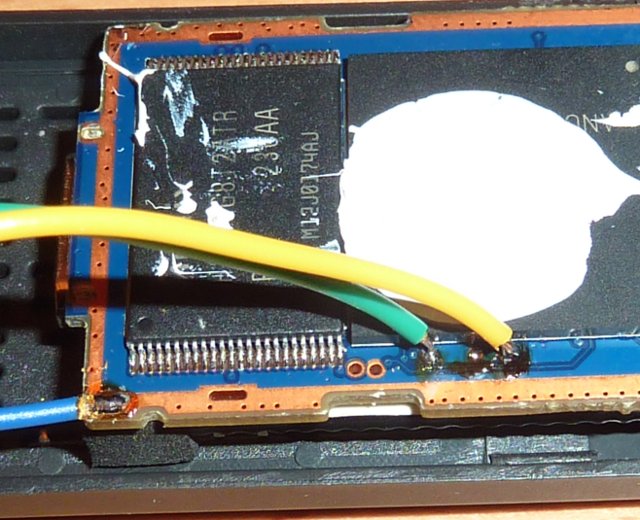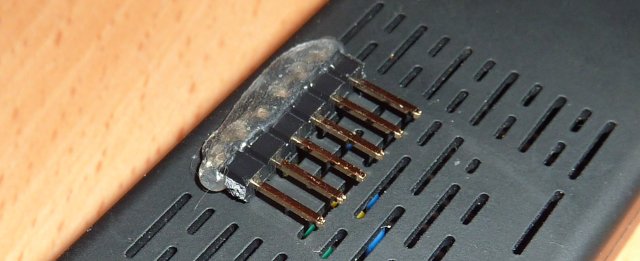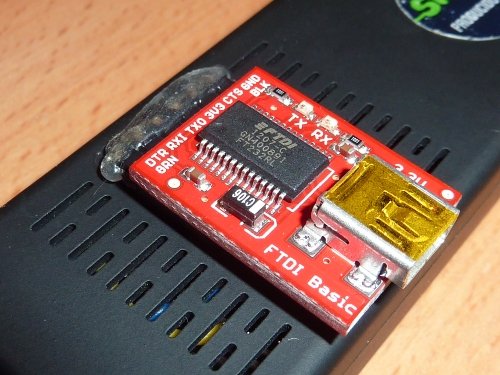Omegamoon has done a pretty neat hack on MK808 Rockchip RK3066 mini PC to connect a Sparkfun USB to TLL board and access the serial console for bootloader and kernel debugging. The first thing he had to do was to open the device, remove the heatsink, and locate the Rx/Tx pads on the board.

The Rx and Tx pins are accessible through pads, not via through holes, so it’s just a little more difficult to solder, but nothing too challenging. He and his brother also soldered another cable to the ground. Then they inserted a 6-pin header via the ventilation holes of the device, soldered the 3 wires to the header, and fix the latter to the casing.
Finally, they just inserted the debug board in the pin header, connected the USB cable to their PC, and started minicom (or equivalent) to start accessing the serial console.
I think that looks awesome. You can find all the steps, and high resolution pictures on Omegamoon blog.

Jean-Luc started CNX Software in 2010 as a part-time endeavor, before quitting his job as a software engineering manager, and starting to write daily news, and reviews full time later in 2011.
Support CNX Software! Donate via cryptocurrencies, become a Patron on Patreon, or purchase goods on Amazon or Aliexpress






